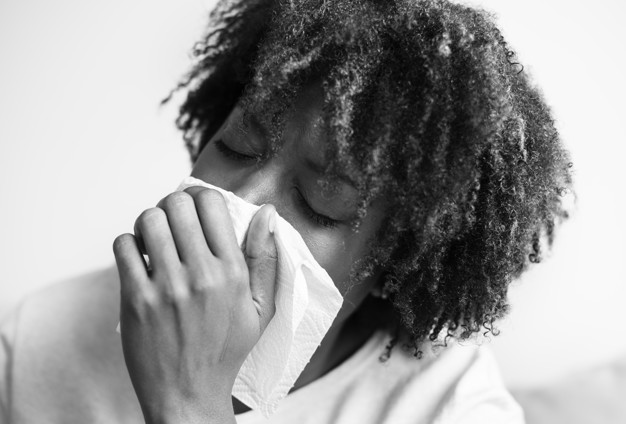The only thing worse than allergies is indoor allergies. Kenyans spend about 60% of their time indoors, where the concentration of pollutants can actually be two to five times higher than outdoors.
If you or your family have been sneezing, wheezing, or itching indoors, allergies could be to blame. Common indoor allergens such as mold, dust, dander, and mites can trigger uncomfortable – and potentially dangerous – allergic reactions.
While it is impossible to get rid of allergens entirely, you can take some simple steps to reduce your exposure at home.
What Could You be Allergic to in Your House?
Dust Mites
Dust mites are microscopic insects that feed off human skin flakes. They are among the most common in-home allergens. These tiny bugs thrive in warm, moist environments, which means bedding and soft furniture are often filled with these invisible pests. Although they don’t bite, they can inflame the nasal passages, leading to itchy, watery eyes and nasal congestion.
Mold
Mold is another common household allergen because it tends to grow in damp, dark places like basements, behind drywall, and in small, poorly-ventilated bathrooms. Like dust mites, mold can cause respiratory problems along with dry, itchy skin. Some types of mold, like black mold, are more toxic than others.
See Also: Toxic Mold and How to Get Rid of It
Pollen
Indoor pollen levels can also be higher than you might think, particularly if your family tends to enjoy the outdoors during the spring and summertime, as all that outdoor pollen is easily tracked indoors.
Pets can also carry pollen inside, which is why some people mistakenly think they are allergic to dogs when it’s actually the ragweed or another irritant.
Cockroaches
Homes those harbour cockroaches that secrete allergens in their saliva and faeces. It’s a common myth that the chemicals used to eradicate cockroaches cause allergic reactions, when in fact the bugs themselves are the culprits.
Pet Allergies
If your household includes four-legged members, you may be exposed to more allergen triggers than you think. Cats and dogs shed invisible dust and dander particles that can become airborne and travel throughout your home with ease. Even the protein in animal saliva, urine, and faeces can cause an allergic reaction in some people.
Indoor Allergy & Asthma Symptoms
Indoor allergies trigger the same reactions that you can expect from outdoor irritants, with one major exception — allergens in your home can cause year-round allergy symptoms that are normally associated with hay fever or seasonal, allergy-induced asthma.
Symptoms of Allergic Reactions to Allergens at Home Include:
- Sneezing
- Watery eyes
- Itchy skin
- Nasal congestion
- Difficulty breathing
- Allergic rhinitis, or hay fever
- An overall feeling of malaise
Symptoms of indoor allergies can range from mild to severe, and some people even require prescription medication to get relief from the swelling within their breathing passages caused by dust mites, mold, pollen, and other irritants. Kids are particularly susceptible to poor indoor air quality because of their developing alveoli (tiny air sacs in the lungs), so long-term exposure can lead to respiratory issues.
Where are Allergens Found in the Home?
Bedroom
Home allergens tend to be concentrated in the areas where we spend the most time. Given that we spend an average of 7 to 9 hours in bed each night and bedrooms are filled with soft surfaces where dust mites, pollen, and pet dander accumulate, bedrooms tend to be the top allergen hotspot in many homes.
Living Room
The living room can be another allergen hotspot, especially if there is carpeting and soft window treatments that cause particles to accumulate, leading to almost uncontrollable dust in the house.
Bathroom
While bathrooms usually don’t have many soft surfaces, high humidity levels from showers and baths, poorly-sealed tiles, and a lack of ventilation can create the ideal breeding ground for mold.
How to Get Rid of Allergens in Your Home
Remove Carpets and Rugs Wherever Possible
Carpets can help keep your floors warm and comfortable, but they tend to exacerbate indoor allergies. They can trap irritants like pet dander, dust, and pollen, only to re-release them again every time someone walks on the carpet. Worse yet, it’s virtually impossible to vacuum up particles that become trapped in the carpet underlay.
If possible, focus on replacing the carpet in your bedrooms with impervious floorings such as hardwood or low-maintenance vinyl. The only exception is your entryway.
Placing a small, washable mat near your door can help trap dust, pollen, and other irritants before they are tracked into your living space. If you have carpet, be sure to dust off at least once a week, and clean it at least several times a year.
Invest in Zip-On Dust Mite Covers for Pillows and Mattresses
Since you can’t wash your mattress, the next-best thing is to regularly vacuum it and let it air out in a dry environment. You can also encase it in a specially-designed, dust mite-proof mattress cover. These washable covers are also available for your pillows to prevent build-up and make it easy to allergy-proof your bedroom.
Constantly Clean Your Curtains
Replace heavy, thick curtains with ones that you can remove and clean regularly, and install wipeable roller blinds in place of those hard-to-clean mini blinds.
Dust Regularly
Remember to clean the dust off from behind electronics like your television, speakers, and fridge.
Use Unscented Cleaning Products
Strong scents are a common irritant, so be sure to choose only unscented cleaning products and avoid the use of artificial air fresheners that can trigger breathing problems among people who suffer from asthma. Natural fabric sprays can also help remove allergens from the couch and furniture.
Check the Air Quality Outside
Air pollution levels change dramatically on an hourly basis and can also be different from one street to the next. We recommend using a free air quality app to stay up to date with the air quality around your house – this will help you take preventative measures like closing windows & switching on an air purifier when the air quality gets particularly bad outside.
Use a Dehumidifier
A dehumidifier is a small machine that removes excess moisture from the air, making it difficult for mold and mildew to grow. It can also keep dust mites at bay, since these creatures thrive in damp environments. Be sure to talk to your doctor if you’ve experienced sinus issues, as the dry air can actually exacerbate some sinus problems.
Hire Pest Control
There are several DIY ways to get rid of cockroaches, and some are even all-natural, like diatomaceous earth, essential oils, or over-the-counter solutions. However, the effectiveness of these home remedies is debatable, and some may even trigger or worsen allergies. The best way to deal with a cockroach infestation is through a professional pest control company.
In conclusion:
While it’s impossible to get rid of allergens entirely, you can control their impact at home. Once you’ve identified your triggers and learned where the allergen hotspots are in your home, you can act accordingly to stop the spread of dust, dander, pollen, mites, and other unwelcome guests. By taking these steps, you will ultimately create a home environment that is healthier and more comfortable for you and your family.














